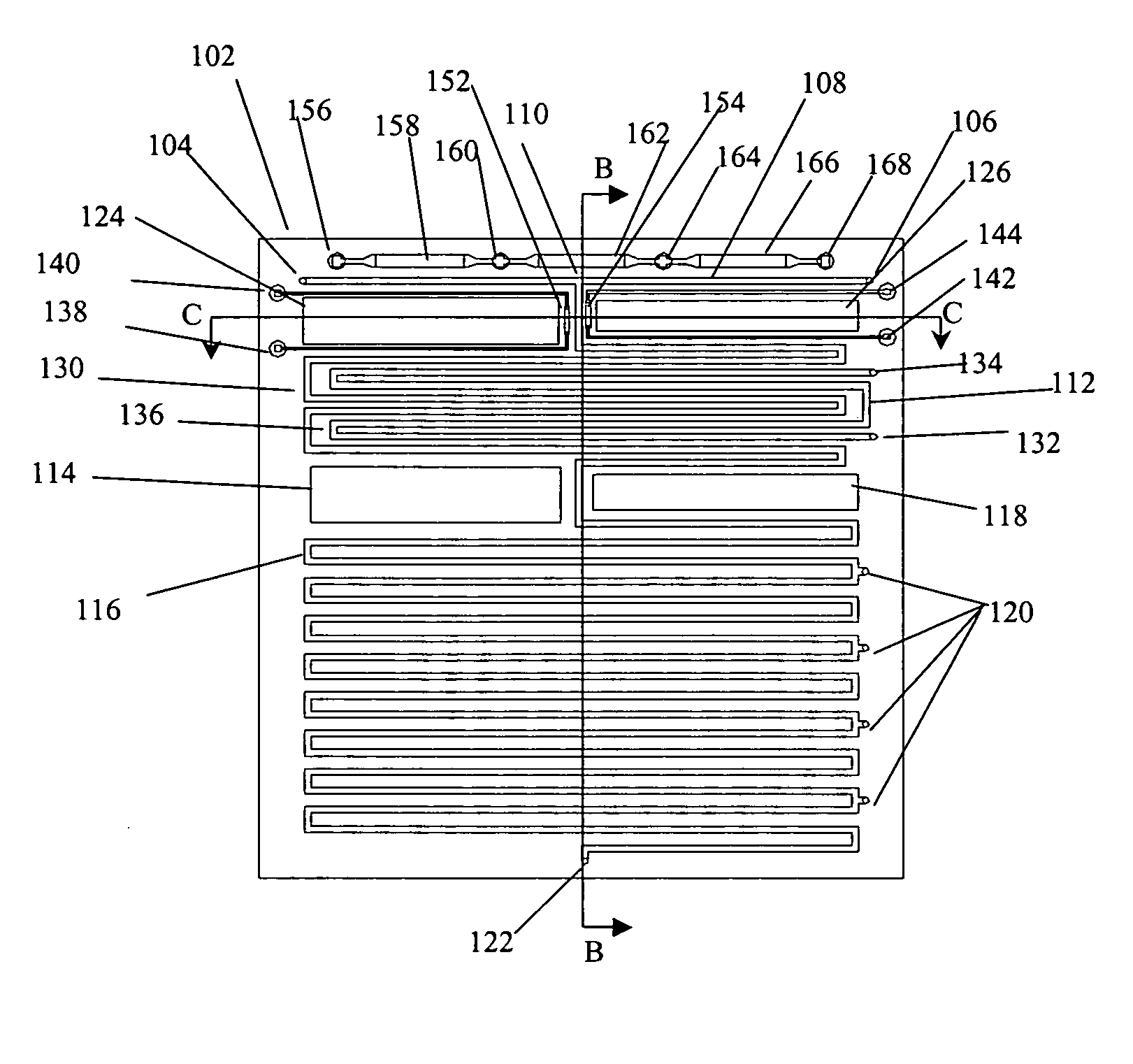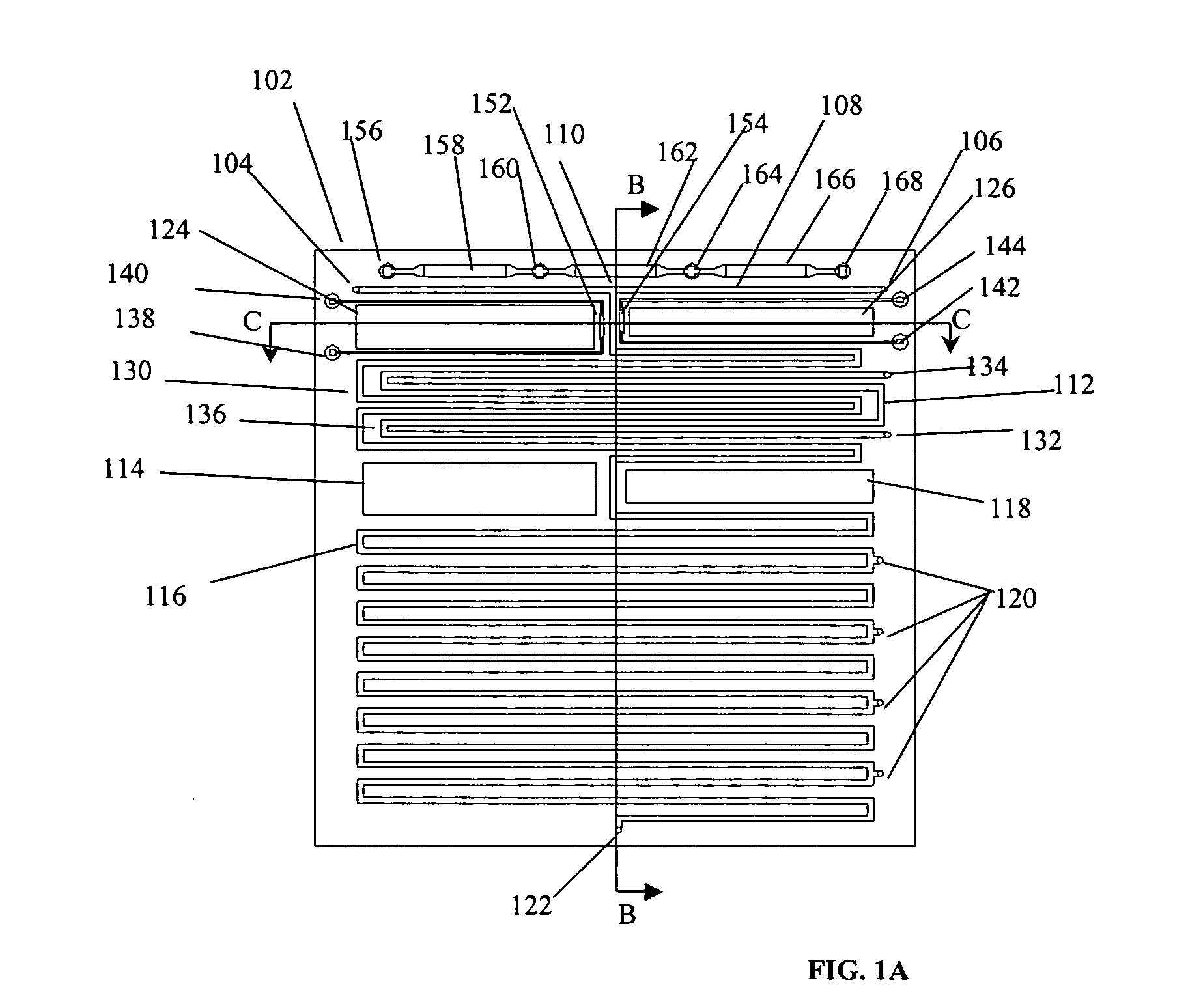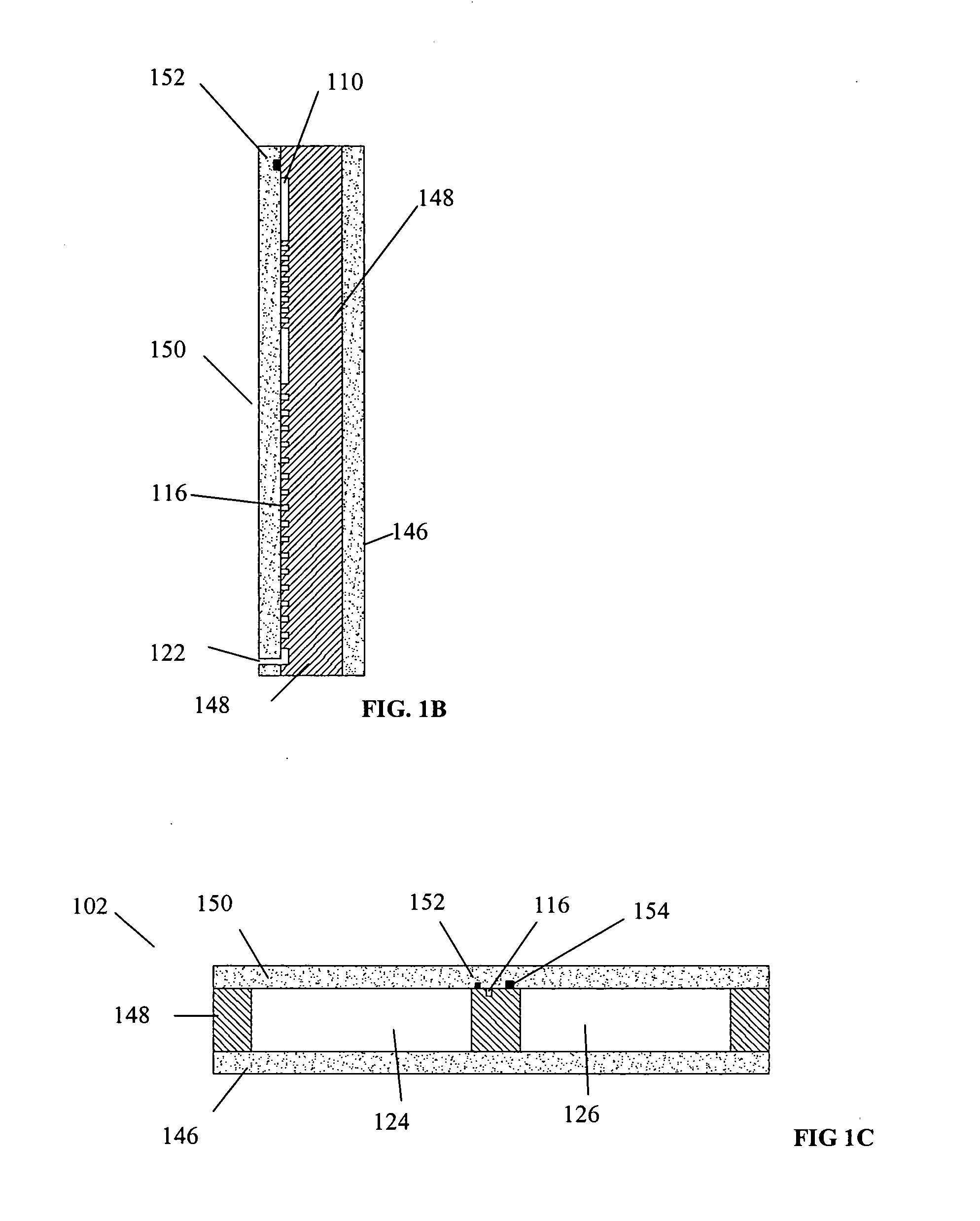Microfluidic chemical reactor for the manufacture of chemically-produced nanoparticles
a microfluidic chemical reactor and nanoparticle technology, applied in the field of nanoparticle development and use, can solve the problems of chemical reaction with ambient media, affecting the quality of nanoparticles, so as to improve uniformity, reduce size distribution, and enhance ability
- Summary
- Abstract
- Description
- Claims
- Application Information
AI Technical Summary
Benefits of technology
Problems solved by technology
Method used
Image
Examples
example 1
[0114] This prophetic example illustrates the fabrication of a microfluidic module for the purpose of making nanocrystaline materials with wet chemistry.
[0115] A module to nucleate and grow nanocrystals to the desired final size and size dispersion, incorporating reactant preconditioning, nucleation, reaction-induced thermal imbalance recovery, growth and growth termination sections, may be made on a single substrate.
[0116] A (100) oriented, double side polished silicon wafer of a resistivity and conductivity type chosen for easy wafer bonding, and of sufficient diameter and thickness, is provided with a silicon dioxide layer on one side and a silicon nitride layer on the other. Silicon has a relatively high thermal conductivity, it is tolerant of chemicals and high and low temperatures and has many standard and well known coating and forming methods associated with it. The oxide side is patterned (“patterned” will be taken to mean photolithographically by means of standard photor...
example 2
[0123] This prophetic example illustrates the utilization of a microfluidic module incorporating appropriate sections for the purpose of making CdSe core nanocrystals with wet chemistry using a microfluidic module made by the process of example 1.
[0124] Prepare 1.0M trioctylphoshine selenide (TOPSe) by dissolving selenium pellets (99.99% purity, ˜2 mm pellet size, Aldrich Chemical Company) in trioctylphoshphine (TOP, tech grade quality or better, density=0.831 g / mL, Aldrich Chemical Company). Leave until a single-phase homogeneous solution is obtained. For the method in which two input reagents are employed, two separate constant volume pumps are used, in this case, two syringe pumps. In a glove box or using standard Schlenk line techniques, syringe 1 is charged with a sufficient mass of dry trioctylphosphine oxide (TOPO), heated above 55° C. (melting point, 50-54° C., tech grade quality or better, Aldrich Chemical Company). In a glove box, or using standard Schlenk line techniques...
example 3
[0134] This prophetic example illustrates the fabrication of a microfluidic module for the purpose of purifying, or separating nanocrystals from their first containing fluid reagent, and replacement of the first fluid reagent with a second fluid reagent, using wet chemistry. It would be advantageous to have one or more modules to purify nanocrystals without exposing the nanocrystals to air or using batch methods such as staged centrifuging.
[0135] The purification may be performed in a dedicated detachable module or the function can be integrated into a module that includes other functions such as growth and growth terminaton. The same method of manufacture can be used for a ligand-exchange section or module. A first silicon wafer is chosen with polishing and pin-hole free silicon nitride on both sides. The wafer doping and type is chosen consistent both with the anodic etching of desired pore sizes in the range of 100 nm to 10 μm and also to allow anodic wafer bonding.
[0136] The f...
PUM
| Property | Measurement | Unit |
|---|---|---|
| sizes | aaaaa | aaaaa |
| sizes | aaaaa | aaaaa |
| FWHM | aaaaa | aaaaa |
Abstract
Description
Claims
Application Information
 Login to View More
Login to View More - R&D
- Intellectual Property
- Life Sciences
- Materials
- Tech Scout
- Unparalleled Data Quality
- Higher Quality Content
- 60% Fewer Hallucinations
Browse by: Latest US Patents, China's latest patents, Technical Efficacy Thesaurus, Application Domain, Technology Topic, Popular Technical Reports.
© 2025 PatSnap. All rights reserved.Legal|Privacy policy|Modern Slavery Act Transparency Statement|Sitemap|About US| Contact US: help@patsnap.com



